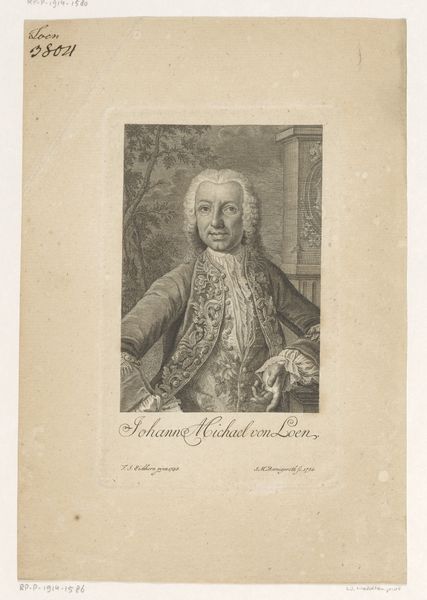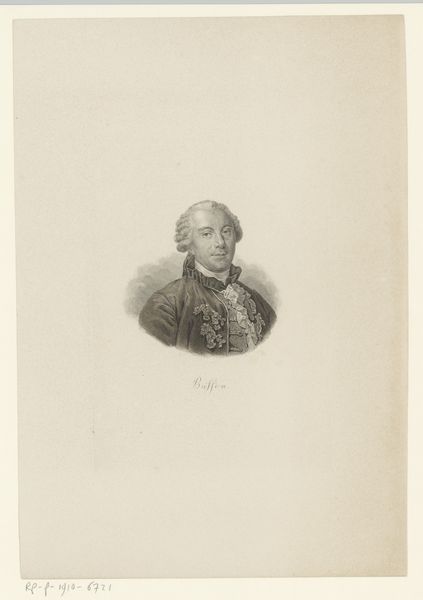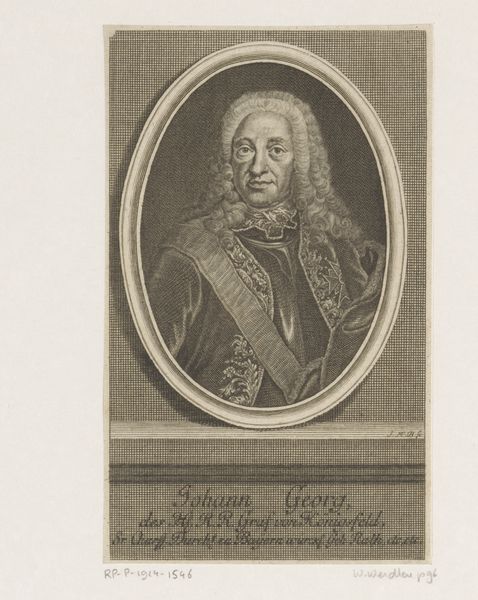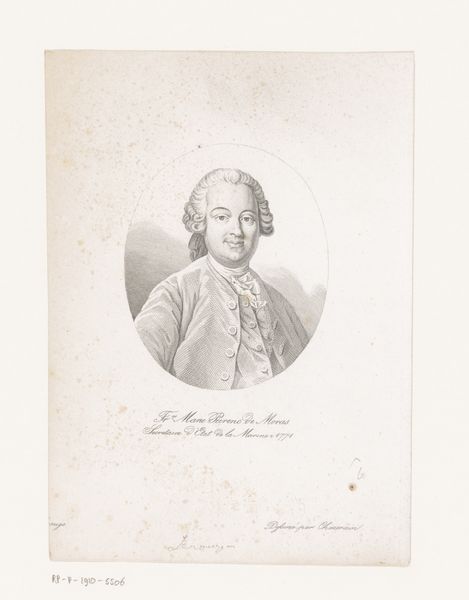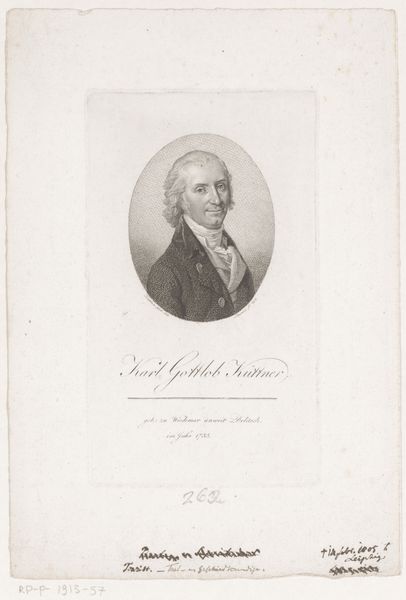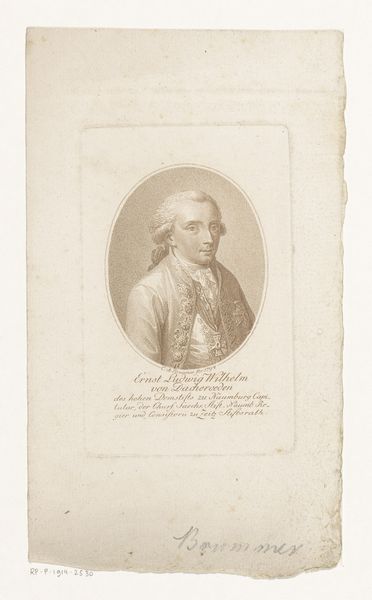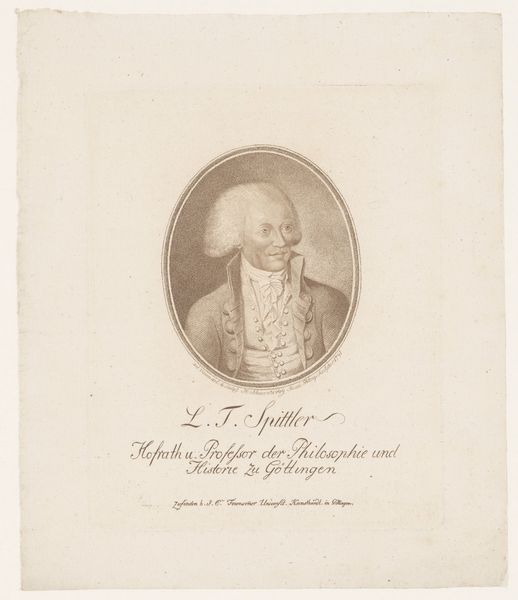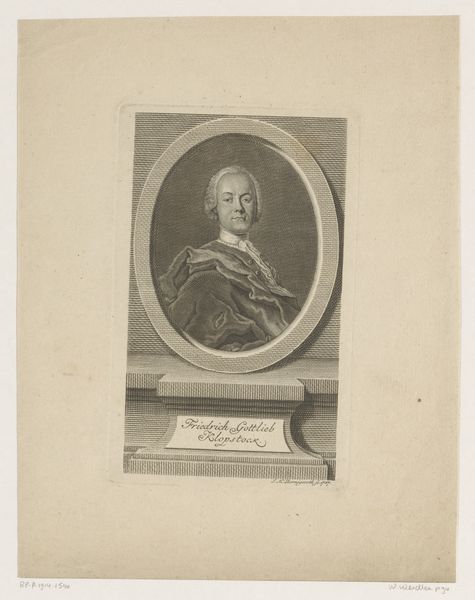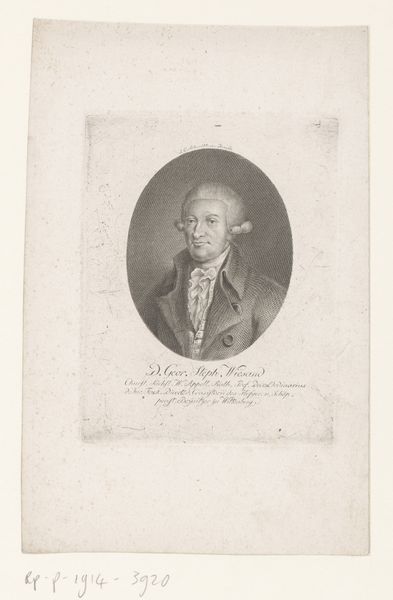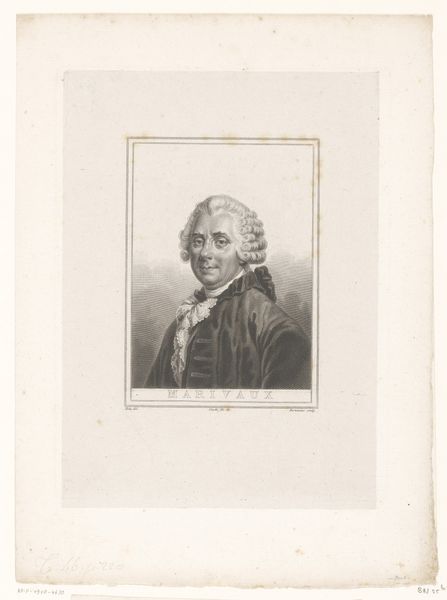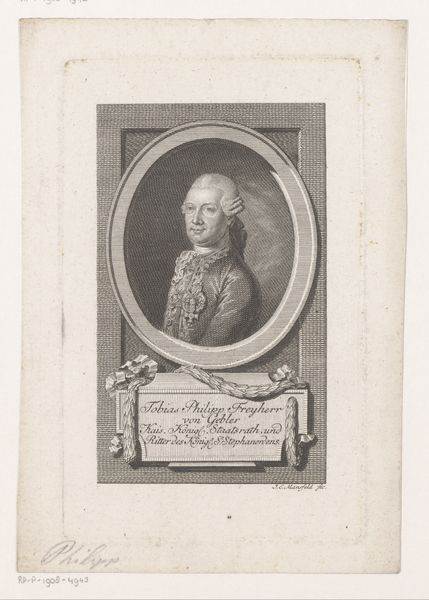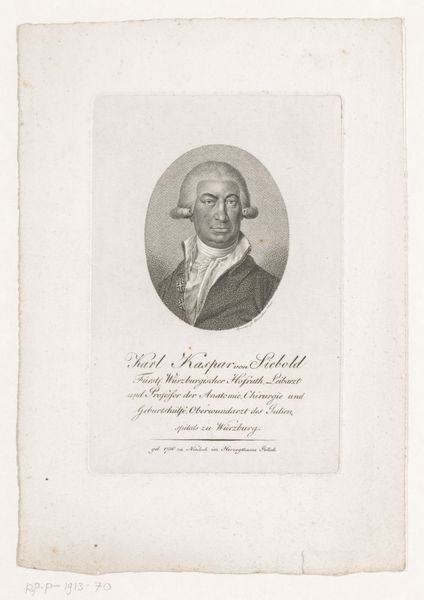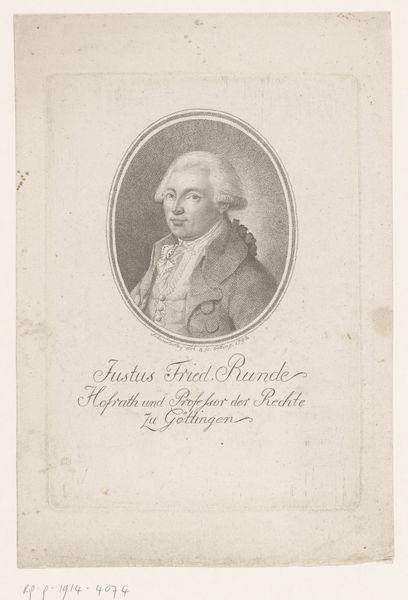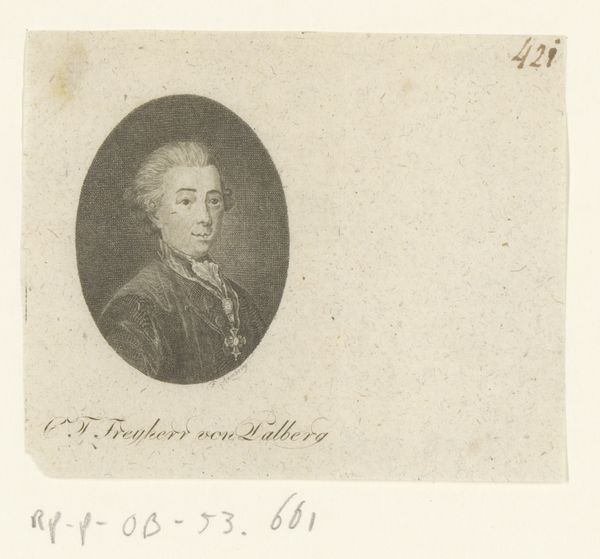
#
pencil drawn
#
aged paper
#
light pencil work
#
yellowing background
#
pencil sketch
#
light coloured
#
old engraving style
#
pencil drawing
#
pencil work
#
tonal art
Dimensions: height 92 mm, width 54 mm
Copyright: Rijks Museum: Open Domain
Friedrich Wilhelm Bollinger made this portrait of Hans Rudolf von Bischoffwerder in the late 1700s using etching and engraving techniques. These processes involve using acid to bite lines into a metal plate, which is then inked and printed. The texture of the print, the delicate network of lines, speaks to the labor-intensive process of its making. Bollinger would have needed skill and precision to control the depth and width of the lines, capturing the likeness of the subject while suggesting the textures of his clothing. Prints like this were part of a burgeoning industry, where the division of labor allowed for increased production and consumption of images. While Bollinger was a skilled artist, his work also reflects the social and economic context of the time, as these prints circulated amongst a growing middle class eager to consume images of power and prestige. By considering the materials, the making process, and the social context of this print, we gain a deeper understanding of its meaning, blurring the lines between art, craft, and commerce.
Comments
No comments
Be the first to comment and join the conversation on the ultimate creative platform.
